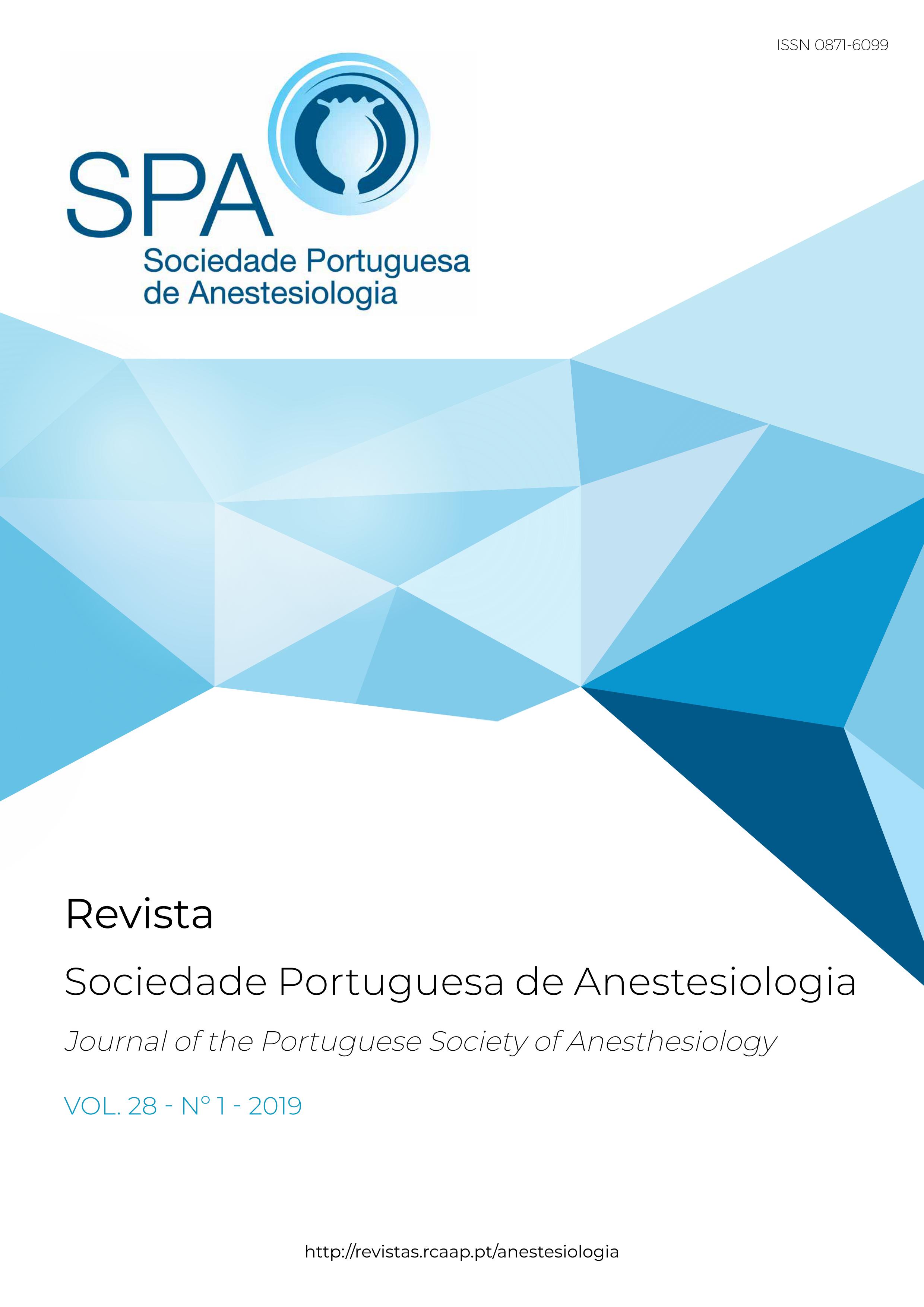Undergraduate and Early Postgraduate Training in Intensive Care Medicine
DOI:
https://doi.org/10.25751/rspa.16615Keywords:
Clinical Competence; Critical Care; Education, Medical, Graduate; Education, Medical, Undergraduate; Intensive Care UnitsAbstract
Recognized in the United States of America as an autonomous medical specialty in the eighties, Intensive Care Medicine as ever since acquired an increasingly relevant role in inhospital care. However, such development as a specialty has not been followed by a proportional one in the undergraduate training of medical students. Consequently, medical students and junior doctors lack competencies both in the care of the acutely ill patient and in emergency.
In this study, we aim to non-systematically review the most recent literature on undergraduate and early postgraduate training in Intensive Care Medicine.
This review was performed using PubMed, Science Direct and Google Scholar databases, focusing on the literature published over the last 18 years.
The lack of basic practical and theoretical competencies in Intensive Care Medicine among medical students and junior doctors can be explained by historical and organizational factors inherent to this field of medical knowledge. Undergraduate training in acute care medicine must start early and be continued throughout medical school. Intensive Care Medicine must battle for its inclusion in current undergraduate curricula and the Portuguese reality should be assessed in a way to define a national standard-curriculum of required competencies.
Downloads
References
2. Portaria n.º 103/2016 de 22 de Abril. Diário da República n.º 79/2016, Série I.
Ministério da Saúde. Lisboa.
3. Almeida AD, Albuquerque LC, Bitencourt AG, Rolim CE, Godinho TM, Liberato MV, et al. Medicina intensiva na graduação médica: perspectiva do estudante. Rev Bras Ter Intensiva. 2007;19:456–62.
4. Smith CM, Perkins GD, Bullock I, Bion JF. Undergraduate training in the care of the acutely ill patient: A literature review. Intensive Care Med. 2007;33:901–7. doi: 10.1007/s00134-007-0564-8.
5. Moraes APP, Araújo GF, Castro CA. Terapia Intensiva na Graduação Médica: Os Porquês. Rev Bras Ter Intensiva. 2004;16:45–8.
6. Qutub HO. Where is critical care medicine in today’s undergraduate medical curriculum? Saudi Med J. 2000;966:327–9.
7. Frankel HL, Rogers PL, Gandhi RR, Freid EB, Kirton OC, Murray MJ. What is taught, what is tested: Findings and competency-based recommendations of the Undergraduate Medical Education Committee of the Society of Critical Care Medicine. Crit Care Med. 2004;32:1949–56.
8. Nascimento DT, Dias MA, Mota RDS, Barberino L, Durães L, Santos PA. Avaliação dos estágios extracurriculares de medicina em unidade de terapia intensiva adulto. Rev Bras Ter Intensiva. 2008;20:355–61.
9. Croley WC, Rothenberg DM. Education of trainees in the intensive care unit. Crit Care Med. 2007;35:117–21. doi: 10.1097/01.CCM.0000252917.25301.18
10. Neves FB, Vieira PS, Cravo EA, Dias M, Bitencourt A, Guimarães HP, et al. Inquérito nacional sobre as ligas acadêmicas de Medicina Intensiva. Rev Bras Ter Intensiva. 2008;20:43–8.
11. Fessler HE. Undergraduate medical education in critical care. Crit Care Med. 2012;40:3065–9. doi: 10.1097/CCM.0b013e31826ab360.
12. O’Connor E, Martin-Loeches I. A blueprint for improving undergraduate education in intensive care medicine. Crit Care; 2016;20:4–5. doi: 10.1186/ s13054-016-1383-5.
13. Luckianow GM, Piper GL, Kaplan LJ. Bridging the gap between training and advanced practice provider critical care competency. JAAPA.. 2015;28:1-5. doi: 10.1097/01.JAA.0000464711.42477.79.
14. O’Connor E, Moore M, Cullen W, Cantillon P. A qualitative study of undergraduate clerkships in the intensive care unit: It’s a brand new world. Perspect Med Educ. 2017;6:173–81. doi: 10.1007/s40037-017-0349-x.
15. Heffner JE, Ellis R, Zeno B. Safety in training and learning in the intensive care unit. Crit Care Clin. 2005;21:129–48. doi: 10.1016/j.ccc.2004.07.002.
16. CoBaTrICE Collaboration. The educational environment for training in intensive care medicine: Structures, processes, outcomes and challenges in the European region. Intensive Care Med. 2009;35:1575–83. doi: 10.1007/
s00134-009-1514-4.
17. Perkins GD, Barrett H, Bullock I, Gabbott DA, Nolan JP, Mitchell S, et al. The Acute Care Undergraduate TEaching (ACUTE) Initiative: Consensus development of core competencies in acute care for undergraduates in the United Kingdom. Intensive Care Med. 2005;31:1627–33. doi: 10.1007/s00134-005-2837-4.
Downloads
Published
How to Cite
Issue
Section
License
Articles are freely available to be read, downloaded and shared from the time of publication.
The RSPA reserves the right to commercialize the article as an integral part of the journal (in the preparation of reprints, for example). The author should accompany the submission letter with a declaration of copyright transfer for commercial purposes.
Articles are published under the terms of the Creative Commons Attribution Non-Commercial License (CC BY-NC).
After publication in RSPA, authors are allowed to make their articles available in repositories of their home institutions, as long as they always mention where they were published.

